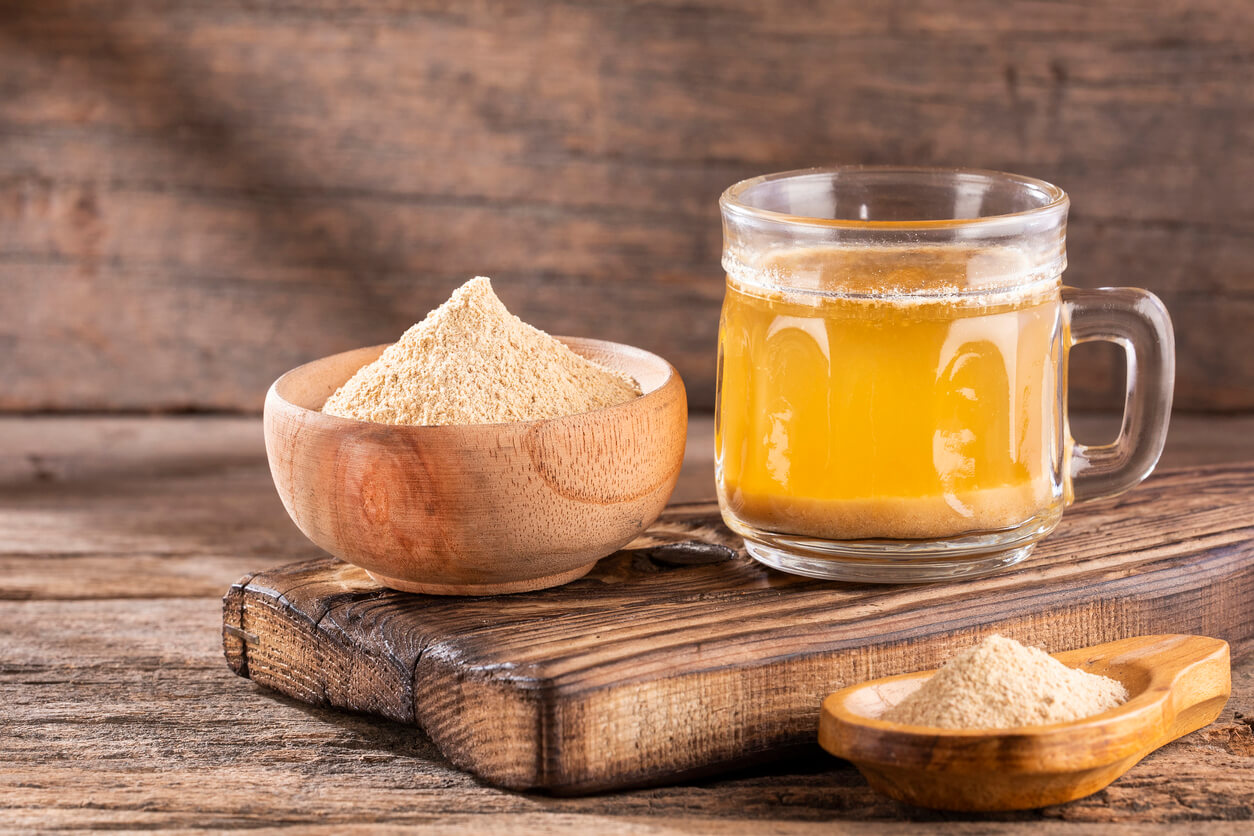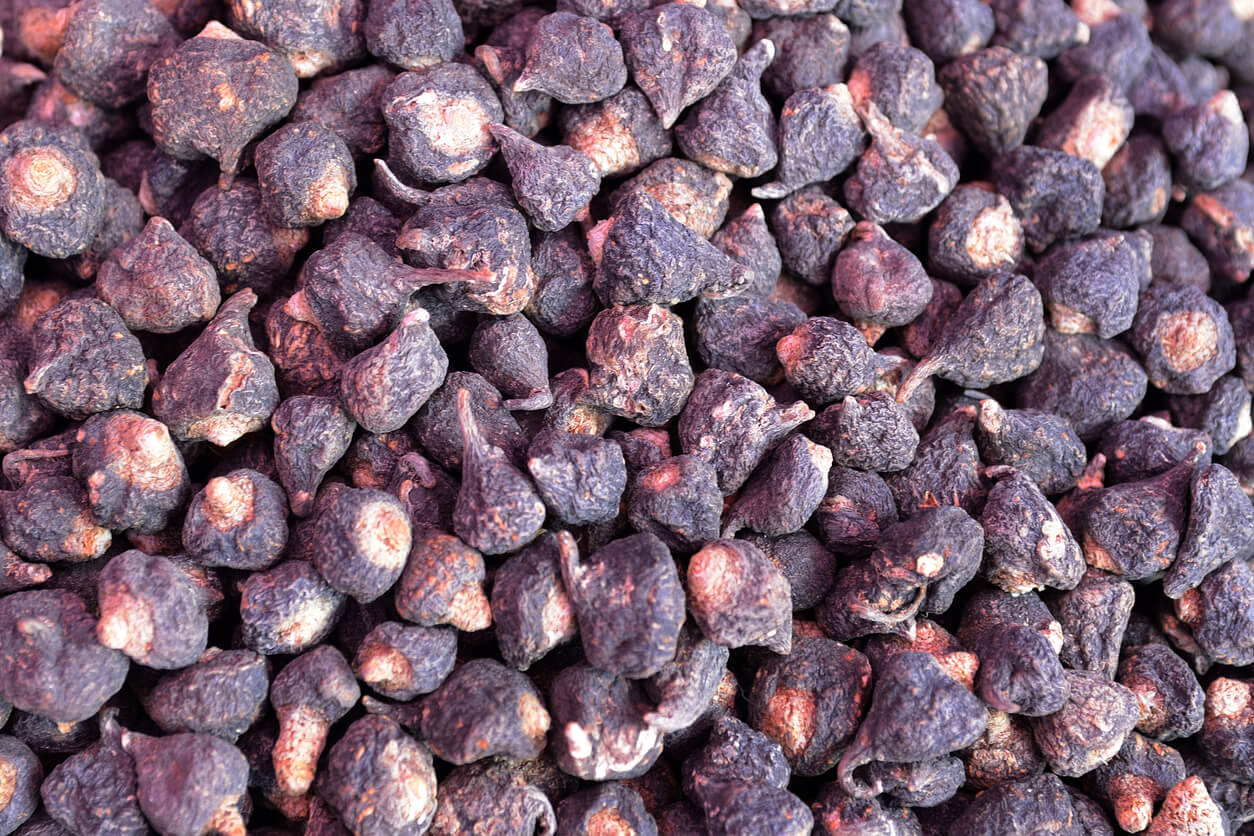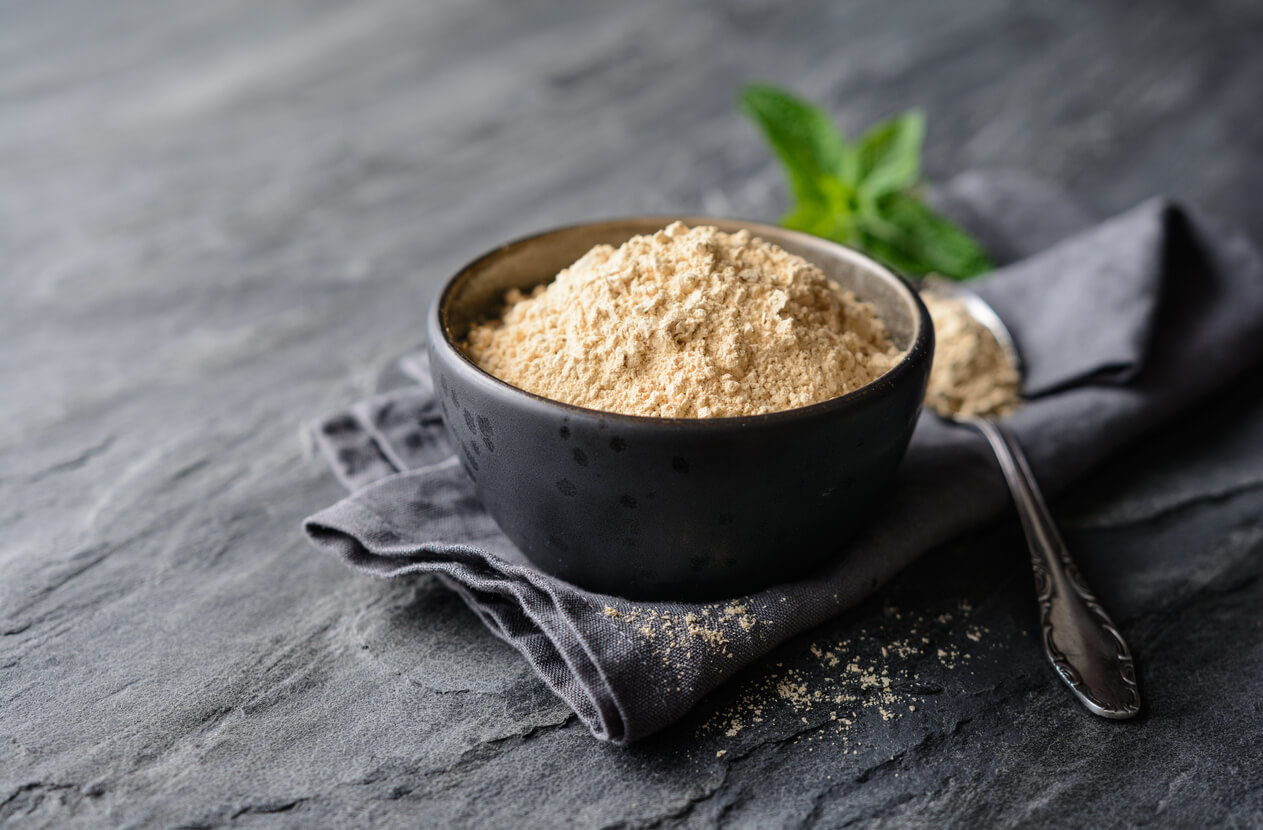Maca root may not be a staple food in your kitchen. But with a lot of people calling it a superfood, is it time to learn more about it?
What Is Maca?

The maca root plant, also known as Lepidium meyenii or Peruvian Ginseng, is native to Peru. Maca grows high in the Andes mountains. Some farmers are also now growing it in Brazil, Bolivia, and China. It’s actually a cruciferous vegetable — like broccoli, cauliflower, cabbage, and kale — but the edible part is the root, hence the name. In addition to being a food, maca has also been used medicinally for centuries to increase fertility, enhance energy, and stabilize mood.
Maca root somewhat resembles a beet, radish, or even a garlic bulb. Varieties are reddish-purple, yellowish-white, or even black in color, with greens growing out of the top.
Some people find that maca has an odor similar to butterscotch or caramel — but it doesn’t taste like them. Maca gives dishes an earthy or nutty flavor. Peruvians traditionally roast or bake the root, but the majority of people today consume maca in powdered form.
Maca Nutrition
Like other root and cruciferous vegetables, maca is low in fat and contains a lot of fiber. Maca also offers plant-based protein and important vitamins and minerals, like calcium, potassium, copper, iron, B vitamins, and vitamin C, as well as other antioxidants.
28 grams (2 Tbsp) of maca root powder has the following nutritional profile:
- 91 calories
- 4 grams of protein
- 20 grams of total carbohydrates
- 9 grams of total sugars
- 1 gram of total fat
- 133% DV of vitamin C
- 84% DV of copper
- 23% DV of iron
- 16% DV of potassium
- 16% DV of vitamin B6
- 11% DV of manganese
- 8% DV of niacin
- 7% DV of calcium
- 6% DV of riboflavin
That’s a decent amount of nutrients packed in a small amount of powder. So given its nutritional benefits, what overall health benefits does maca offer?
8 Potential Health Benefits of Maca Root

Maca root’s gain in popularity is largely due to its purported health benefits. Just a few of its proported benefits include boosting energy, fertility, and libido, protecting your skin and bones, and even improving your memory.
Experimental studies support some of these claims, but it’s important to note that most of the studies to date are either small, were done on animals (Animal studies are often cruel. And last time I checked, there were a few differences between humans and rats.), or sponsored by companies with a vested interest in maca products.
So, in some regards, the “jury is still out” on the health benefits of maca root. And more study is necessary. But what we know so far is promising. And many people swear by maca as an important part of their diet and lifestyle.
Here are seven popular health claims about maca root that have some research to back them up.
1. Boosts Libido & Fertility
This is probably the best-known purported benefit of maca. It’s also perhaps one of the main reasons many people are trying it. A 2002 study published in Andrologia found that men who consumed 1.5 or 3 grams of maca powder daily experienced an increase in libido, compared to men given a placebo. And in 2015, a study was published that found maca root beneficial helps to improve the libido of postmenopausal women who were on antidepressants.
Likewise, in 2010, a review of four randomized clinical studies that included a total of 131 people was conducted — finding that maca could improve libido after consuming it for six weeks. And a 2009 pilot study published in the Journal of Ethnopharmacology found that maca extract didn’t improve sports performance for male distance cyclists any more than a placebo after two weeks. But the male cyclists taking maca reported significantly higher levels of sexual desire at the end of the two weeks than the control group.
Maca root may also help in some cases of erectile dysfunction (ED) and fertility issues in men. A small 2009 study published in Andrologia found that men with mild ED who took 2.4 grams of maca daily for 12 weeks reported a significant improvement. Use of maca may also improve semen quality in both fertile and infertile men, according to a 2016 review.
2. Relieves Symptoms of Menopause
During menopause, women experience a natural but often dramatic shift in levels of estrogen, which causes many uncomfortable symptoms. So, how does maca fit in? Many people believe that maca can help relieve some of these symptoms by rebalancing estrogen levels. Interestingly, a 2006 study published in the International Journal of Biomedical Science found that maca helped balanc hormone levels in 34 postmenopausal women who took two maca-containing tablets per day. They reduced their symptoms of hot flashes and night sweats compared to a placebo group.
3. Improves Mood
Maca root contains flavonoids, or compounds known to have antioxidant properties and possible antidepressant activity. A 2015 study published in Climacteric found that when 29 Chinese women took 3.3 grams per day of maca for six weeks, they experienced an improvement in depression. And in a horribly cruel 2014 study (that I do not ethically condone), researchers found that rats who were given either 250 or 500 mg/kg of maca powder for six weeks after exposure to a barrage of stressors experienced antidepressant-like effects, compared with a control group given the antidepressant fluoxetine. The researchers attributed this effect to the antioxidant activity of maca.
4. Protects Bone Health
Some animal studies indicate that maca can be used to protect bone health. This could be especially important in postmenopausal women, who are at an increased risk for developing osteoporosis. One 2010 study done with rats found that red and black maca was the most effective at protecting bones, while yellow maca did not have as much impact. Another study in 2009 found that maca supplementation improved bone metabolism in female rats.
5. May Protect You From the Sun
Maca contains compounds that may prevent ultraviolet damage to your skin. This was demonstrated in a 2008 study using rats, in which the rats who had maca extract topically applied to their skin received protection from UV rays, compared to the commercial sunscreen control group. A very similar study using maca leaf extract on rats found the same results in 2011 and attributed the effects to polyphenol antioxidant activity and free radical inhibition. Because these effects have only been seen using animal studies, and only with topical application, more research is needed to figure out if maca can prevent UV damage in humans as well.
6. Improves Your Brain Function
Some people are trying maca in hopes of restoring memory or improving their learning capacity. Some animal studies show this potential, but more research is needed to apply it to humans. For instance, a 2011 study of mice found that maca improved their memory, after consumption of 20% alcohol, when finding their way through a maze. Rats in another 2006 study experienced improvement in latent learning, especially with black maca root. And in 2014, a review was done on the impact of medicinal plants on memory, in which researchers proposed that maca had such potential for improving memory and learning that it could have future applications in Alzheimer’s treatment.
7. May Have Prostate Benefits
Enlargement of the prostate, or benign prostatic hyperplasia (BPH), is common as men get older and can cause problems when passing urine. Some animal studies suggest that red maca may help reduce enlarged prostate glands. Furthermore, red maca is full of compounds called glucosinolates, which have been studied for their ability to lower prostate cancer risk.
Concerns About Eating Maca Root

Maca root has a number of potentially significant health benefits and is generally considered safe. However, there may also be reasons that certain people would want to avoid it.
For one, maca contains iodine, which is an important nutrient that many people don’t get enough of it. However, this extra source of iodine may not be safe for everyone. People with hypothyroidism could benefit from it, whereas it could be harmful for those with hyperthyroidism.
Another significant issue with maca is its price. Whole maca root can be expensive because it’s not common in grocery stores outside of Peru and Bolivia. Maca powders and supplements, on the other hand, are widely available, but they’re in high demand and priced accordingly. These powders and pills can range from $6-$50 (or more) depending on the size, brand, and type of product.
Maca Root Ethics and Sustainability
There are some ethical concerns with commercial maca production as well. Workers often receive low wages. And now that Chinese farmers are growing it too, Peruvian farmers are losing market share for this culturally and economically important crop. And even though Peru has laws in place that require the processing of maca in their country before exporting — to protect local businesses — it appears that many Chinese maca buyers are using illegal methods to bypass this law, smugging unprocessed maca root to their country.
Traditionally, maca grown in the Peruvian Andes is free of agrotoxins. But in China, it’s grown with pesticides, herbicides, and chemical fertilizers. There is some concern that China may also be synthetically making maca and exporting it under the guise of being the real thing. When reviewing maca product labels, look for Peruvian or Bolivian grown maca.
With the mass production of maca, there’s also concern that soil depletion may be an issue as the root can exhaust soil. Traditionally, maca crops have been heavily fertilized using alpaca and sheep manure. But with the explosion of its growth as a monocrop, and the use of tractors to prepare land instead of doing it by hand, other chemical fertilizers are in use to boost production.
Many South Americans who have historically depended on maca as a dietary staple also now struggle to afford it, due to high demand — especially in the U.S. and China. In the long run, supply can increase with demand. Given its promise as a health food and source of medicine, let’s hope that we can resolve the ethical and sustainability issues surrounding maca. Ideally, it will benefit humankind in the long term and not become a source of suffering for the very communities that need it for their economy.
How to Eat Maca Root

There are several ways to enjoy maca root. In the U.S. and other developed countries, people enjoy maca in powdered form, adding it to things like smoothies, oatmeals, baked goods, yogurt, and soups. Maca supplements are also available and sold as capsules and powders. In Peru, they drink it as a sweet, fermented drink called maca chicha.
So what does maca taste like? It depends on who you ask. Some people think maca powder tastes like caramel or has a delicious malt-like flavor that works well in smoothies and other beverages. Others have an opposite reaction, finding that maca tastes too earthy, or even slightly like rotting wood. It sounds to me like the true taste of maca is almost as polarizing as the great cilantro debate.
Where to Find Maca Root
Maca root may not be as prevalent in local supermarkets as apples and bananas, but more and more retailers are starting to stock it due to consumer interest. If you don’t see it at your mainstream grocer, you might have better luck at a health food store. And, of course, you can find powdered forms online and order it that way too.
Note that some maca root powder comes gelatinized, but this doesn’t necessarily mean it contains added gelatin. In this case, gelatinization is a process by which sun-dried maca roots are boiled to remove the starches, making them easier to digest. If you’re concerned, check the label for gelatin. Many maca products will also state that they are vegan.
With the global commercialization of maca, it’s a good idea to look for organic and fair trade maca when possible too. That way, you can avoid chemical fertilizers and pesticides. And so you can have confidence that your purchase is helping rather than hurting the communities growing the maca.
Maca Root Recipes

Here are a few healthy recipes using maca that you may want to try.
Hormone Balancing Almond, Maca, & Cinnamon Smoothie by Wallflower Kitchen — This is a raw, vegan, gluten-free smoothie that combines several plant protein sources with maca. And it’s sweetened with vanilla, cinnamon, and dates.
Turmeric Maca Powder Cacao Energy Balls by Natalie’s Health — These energy balls come packed with maca and other superfoods like goji berries and turmeric. They’re also rolled together with cocoa powder, nuts, and dates for a healthy snack.
Sweet Potato & Maca Soup with Green Harissa by Hello Veggie — This hearty soup is a blend of warm spices, creamy almond butter, sweet potatoes, and green Harissa, with a bit of maca powder for added antioxidants.
Should You Eat Maca Root?

Maca root is full of nutrients that suggest it could be a positive addition to your diet. But certainly, more research is needed in humans. And maca comes with some notable ethical and sustainability considerations. Not to mention a hefty price tag depending on what type you buy.
Is it worth it? That’s up to you.
Tell us in the comments:
- Have you tried maca root?
- How do you use it?
- What do you think of the taste?
Featured Image: iStock.com/vainillaychile




